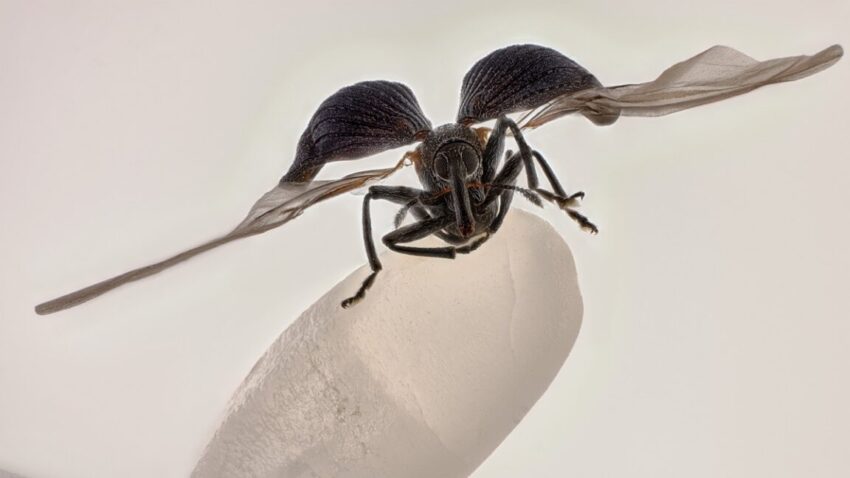
rice weevil on a grain of rice A stunning image of a rice weevil on a single grain of rice has won the 2025 Nikon Small World photomicrography contest, yielding valuable insight into the structure and behavior of—and providing a fresh perspective on—this well-known agricultural pest.
rice weevil on a grain of rice
Overview of the Nikon Small World Contest
The Nikon Small World contest has long been a prestigious platform for showcasing the beauty and intricacies of the microscopic world. Established in 1975, the competition invites scientists, researchers, and photographers from around the globe to submit their best photomicrographs. Each year, the contest highlights the intersection of art and science, encouraging participants to explore the hidden details of life that are invisible to the naked eye.
Winning images are selected based on criteria such as technical excellence, originality, and the ability to convey a story or message about the subject. The contest not only celebrates the artistry involved in capturing microscopic images but also emphasizes the scientific significance of these subjects, often leading to greater public interest and understanding of various biological phenomena.
The Winning Image: A Closer Look
The winning photograph, taken by Zhang You of Yunnan, China, features a rice weevil (Sitophilus oryzae) perched on a single grain of rice. This image stands out not only for its aesthetic appeal but also for the scientific insights it provides into the life cycle and behavior of this common agricultural pest.
Technical Aspects of the Photograph
In his statement, You emphasized the importance of mastering both the technical and artistic aspects of photomicrography. “It pays to dive deep into entomology: understanding insects’ behaviors and mastering lighting,” he remarked. The photograph exemplifies this philosophy, showcasing the intricate details of the rice weevil’s anatomy, including its distinctive elongated snout and textured exoskeleton.
The lighting used in the image plays a crucial role in highlighting these features. Proper illumination can dramatically affect the perception of depth and texture, allowing viewers to appreciate the fine details that characterize the rice weevil. You’s ability to balance light and shadow enhances the image’s visual impact, drawing the viewer’s eye to the subject while also providing context through the grain of rice.
Serendipity in Photography
Creating the winning image involved an element of luck, as You explained. “I had observed rice weevils in grains before, but never one with its wings spread,” he noted. The rice weevil in the photograph was fortuitously found on a windowsill, seemingly preserved in a moment of desperation, perhaps in a final attempt to escape. This chance encounter not only provided You with a unique subject but also underscored the unpredictable nature of wildlife photography.
Capturing a spread-wing specimen is particularly challenging due to the tiny size of these insects. The delicate process of preparing such specimens for photography often requires a level of precision and skill that can be difficult to achieve. Therefore, encountering a naturally posed rice weevil was both a stroke of luck and a source of inspiration for You.
Understanding the Rice Weevil
The rice weevil is a well-known pest in agricultural settings, particularly in grain storage facilities. It is notorious for infesting stored grains, including rice, wheat, and corn, leading to significant economic losses for farmers and producers. Understanding the biology and behavior of this insect is crucial for developing effective pest management strategies.
Life Cycle and Behavior
The life cycle of the rice weevil consists of four stages: egg, larva, pupa, and adult. Female rice weevils lay their eggs inside grains, where the larvae hatch and feed on the grain’s interior. This feeding behavior not only damages the grain but also makes it unfit for consumption. The adult weevils emerge from the grain, ready to continue the cycle by mating and laying more eggs.
Understanding the behavior of rice weevils is essential for controlling their populations. They are attracted to stored grains and can quickly infest large quantities if not managed properly. Effective pest control measures often involve a combination of sanitation, monitoring, and the use of insecticides when necessary. However, the challenge lies in balancing these measures with the need for sustainable agricultural practices.
Implications for Agriculture
The insights gained from You’s photograph extend beyond mere aesthetics; they contribute to a broader understanding of pest management in agriculture. By highlighting the rice weevil’s physical characteristics and behaviors, the image serves as a reminder of the importance of studying agricultural pests in detail.
Farmers and agricultural scientists can benefit from such visual representations, as they can lead to improved identification and understanding of pest behaviors. This knowledge is crucial for developing targeted strategies that minimize crop damage while reducing reliance on chemical pesticides, which can have detrimental effects on the environment and human health.
Reactions from the Scientific Community
The Nikon Small World contest has garnered attention from various stakeholders, including scientists, educators, and photographers. Reactions to You’s winning image have been overwhelmingly positive, with many praising the combination of artistry and scientific insight it represents.
Encouraging Public Engagement
One of the primary goals of the Nikon Small World contest is to engage the public in science and encourage curiosity about the microscopic world. Winning images like You’s can serve as educational tools, sparking interest in entomology and the broader field of biology. By showcasing the beauty and complexity of insects, the contest helps to demystify these creatures and promote a greater appreciation for biodiversity.
Inspiring Future Generations
You’s success also serves as an inspiration for aspiring photographers and scientists. His dedication to mastering the art of photomicrography and his ability to capture the essence of his subjects demonstrate the potential for creativity within scientific disciplines. This can encourage young individuals to pursue careers in science, technology, engineering, and mathematics (STEM), where they can explore their passions while contributing to important research and discoveries.
Conclusion
The 2025 Nikon Small World contest has once again highlighted the remarkable intersection of art and science through the lens of photomicrography. Zhang You’s winning image of a rice weevil on a grain of rice not only captivates viewers with its aesthetic beauty but also provides valuable insights into the life and behavior of this agricultural pest. As the contest continues to inspire curiosity and engagement in the scientific community, it serves as a reminder of the importance of understanding the microscopic world that surrounds us.
Source: Original report
Was this helpful?
Last Modified: October 16, 2025 at 2:36 am
0 views















